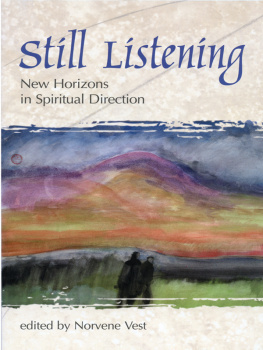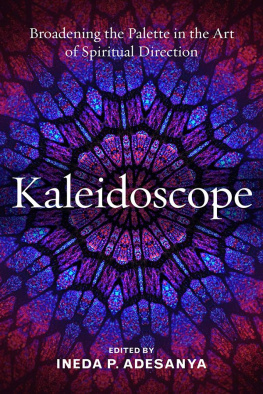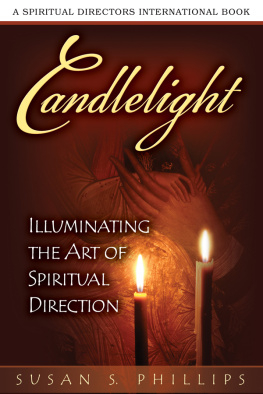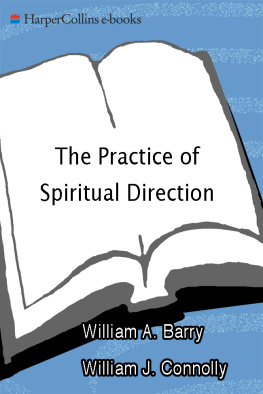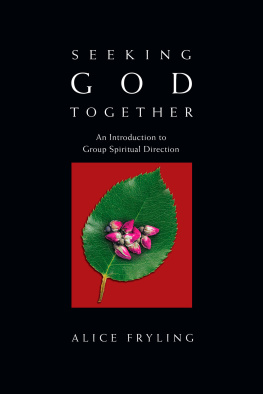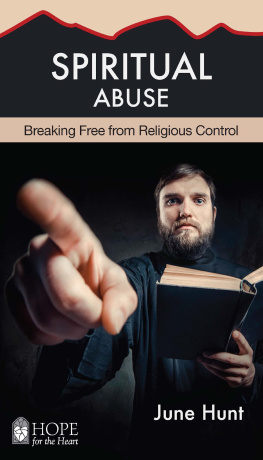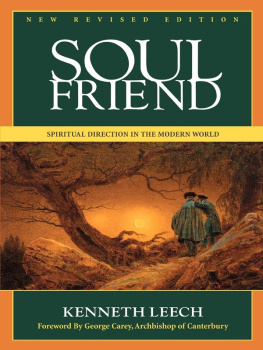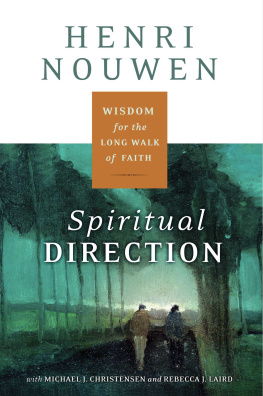Stll Lstenng
New Horizons
in Spiritual Direction

Edited by Norvene Vest

An imprint of Church Publishing Incorporated
HarrisburgNew York
Copyright 2000 by Norvene Vest
All rights reserved. No part of this book may be reproduced or transmitted in any form or by any means, electronic or mechanical, including photocopying, recording, or by any information storage and retrieval system, without written permission from the publisher.
Unless otherwise noted, the Scripture quotations contained herein are from the New Revised Standard Version Bible, copyright 1989 by the Division of Christian Education of the National Council of Churches of Christ in the U.S.A. Used by permission. All rights reserved.
Morehouse Publishing
4775 Linglestown Road
Harrisburg, PA 17112
Morehouse Publishing is an imprint of Church Publishing Incorporated
Cover design by Annika Baumgardner
Cover art, Land of the Midnight Sun, by Diana Ong (b. 1940), private collection, SuperStock
Library of Congress Cataloging-in-Publication Data
Still Listening : new horizons in spiritual direction / edited by Norvene Vest
p. cm
Includes bibliographical references.
ISBN 10 : 0-8192-1814-6 (alk. paper)
ISBN 13 : 978-0-8192-1814-8 (alk. paper)
1. Spiritual direction. I. Vest, Norvene
BV5053.S75 2000 00-056108
253.53dc21 CIP
Printed in the United States of America
07 08 09 10 8 7 6 5
As spiritual directors, we ourselves are formed by many influences, not least of which is God's ongoing call to us to unfold in holiness. Yet no matter what other factors come into play, each of us is introduced to life with Mystery by our parents. During preparation of this book, four of the contributors walked alongside parents in the spiritual work of dying. We dedicate this book to all our parents and especially to them:
E. JANE DRISKILL,
mother of Joseph D. Driskill
EARL REED, SR.,
father of Juan Reed
GEORGE B. RUFFING,
father of Janet Ruffing
CARROLL WIGGINS,
father to Rich Rossiter's partner Perry Wiggins
Contents
|
Spiritual Direction in the Corporate Environment
Tom Cashman |
Spiritual Direction with Traumatized Persons
Joseph D. Driskill |
Spiritual Direction with an Addicted Person
Barry Woodbridge |
Wary Seekers: Spiritual Direction with Church Dropouts
Norvene Vest |
|
Generations, Our Differences and Similarities: How Generational Studies Enlighten Spiritual Direction
Howard Rice |
Spiritual Direction with Lesbian, Gay, Bisexual, and Transgendered Persons
Rich Rossiter |
Can I Get a Witness? Spiritual Direction with the Marginalized
Juan Reed |
Companions at the Threshold: Spiritual Direction with the Dying
Margaret Guenther |
|
Let the Oppressed Go Free: Spiritual Direction and the Pursuit of Justice
Kenneth Leech |
Tending the Communal Soul in a Congregational Setting
Sandra Lommasson |
Not Words Alone: Spiritual Direction with Visual Images
Betsy Caprio Hedberg |
Flesh Is More than Flesh: Sexuality and Spirituality in Spiritual Direction
Janet Ruffing |
A Graph of Spirituality: Understanding Where We Are Going by Knowing Where We Have Been
Steven Charleston |
|
|
Introduction
We welcome you to our volume on new horizons in spiritual direction, for which we have invited directors with special skills and interests to share their thoughts on cutting-edge issues in the field of spiritual direction. Writing about issues that may be surfacing periodically in their ministries, each author shares his or her insights about a challenge that has been the subject of their own deep reflection and prayer. We do not presume to be comprehensive but simply to speak of matters that each has found crucially important in practice. This book is not an overview of the spiritual-direction process, its definition and goals. Rather it is our hunch that new issues are arising frequently in the regular practice of spiritual direction, about which mature directors would appreciate a colleague's wisdom. We seek to address some of those issues fruitfully.
The chapters are divided into three sections. The first section contains reflections on the person who comes for direction. Always we know that the Spirit is embodied in the unique gifts and limitations of a particular person. Yet there are patterns of development that pose special challenges to the director, and these chapters intend to help us listen effectively in such cases. Tom Cashman considers the emerging field of spiritual direction within corporations, discovering how the Spirit is already present and strengthening the role of values at work. Joe Driskill sensitively explores concerns and opportunities in directing people who have been emotionally and physically traumatized. Barry Woodbridge spells out how addictive patterns permeate a directee's life. My own essay looks at the wary seekers who are returning to church through spiritual direction.
The second section speaks to special life issues that intersect with spiritual development. Howard Rice links the results of generational studies with spiritual-direction practice, and Margaret Guenther looks at spiritual direction as it assists on the threshold of death. Both Rich Rossiter and Juan Reed help us explore our own shortcomings in meeting persons who require that we grow in order to hear them into authentic speech: the marginalized and more specifically the sexually marginalized, the gay, lesbian, bisexual, and transgendered communities.
The third section locates the practice of spiritual direction within the environment around us. The section is titled The Social Context as a way of pointing toward broader, communal dimensions affecting the moment of direction. Kenneth Leech reminds us about the essential connection between spiritual direction and justice. Betsy Caprio Hedberg considers the dimensions beyond words that shape our spiritual lives, and how the senses, especially the visual, can be brought explicitly into the direction experience. Janet Ruffing emphasizes that a theology of incarnation must include a place for the passions of sexuality, and shows how that need can be honored in spiritual direction. Sandra Lommasson shows concretely how we can transcend our cultural bias toward individualism by tending the communal soul of a congregation. Finally, Steven Charleston asks where have we been and where we are going in this journey of the Spirit as a new century opens ahead.
The essays do not speak with a single voice, but with a diversity that emphasizes the unity of our lives in God's Spirit. Yet unity never means homogeneity, and we welcome authentic experiences of God emerging from a variety of perspectives. Taken together, the essays invite us as directors to look more deeply and to pray more earnestly about our ministry: in direction, do we seek primarily to follow the lead of the directee or to challenge the directee to new ways of being? Stated another way, is direction primarily contemplative or prophetic? When dealing with matters of righteous passion in ourselves and our directees, to what extent is it appropriate to rein in those passions by logic and system? When we become aware of issues that make us uncomfortable, do we avoid directing persons with those issues, or can we invite God and our directees to teach us new opportunities for conversion? As always, generalizations are often inadequate in the search for fidelity to the Mystery called God, but a genuine effort to struggle with difficult questions always helps to break us open more fully to Divine Love.

